The Governor’s Fiscal Year (FY) 2025 budget proposal supports important investments in our Commonwealth, especially through new Fair Share dollars. This is despite the fact that little additional tax revenue from traditional sources is available this year for the critical public investments that make our state more affordable and equitable and help all of us thrive. Little additional money is available because of changing economic conditions expected to reduce non-Fair Share revenue for FY 20251 and, in part, due to tax cuts enacted last year.2 Low growth in proposed spending for FY 2025 comes at a time of a continued affordability crisis as well as cuts to last year’s budget.3 Some of these cuts will have the greatest impact on our lowest-income neighbors and communities of color.
The Governor’s budget for this fiscal year proposes nearly $56.2 billion in non-Fair Share spending compared to $54.6 billion in the 2024 General Appropriations Act (GAA).4,5 After adjusting for anticipated inflation, non-Fair Share spending in this budget proposal decreases 0.5 percent compared to last year’s GAA.6 Accounting for Fair Share spending and inflation, the Governor’s budget increases spending by less than one percent.7
Despite stagnant non-Fair-Share revenue, the Governor relies on a variety of measures to fund investments in this proposal. No withdrawals from the Commonwealth’s rainy day fund are anticipated, but, sensibly, some additional contributions to grow the rainy day fund could be suspended if revenues do not rebound. This would help avoid harmful budget cuts in FY 2025.
While not an exhaustive list, there are many notable investments and policy changes in this proposal. The Governor’s budget provides funding for access to counsel for low-income renters and low-income owner-occupants, which is a major equity improvement in the way evictions are processed. While Massachusetts Rental Voucher Program (MRVP) funding increases are proposed for this year, additional funds would be necessary to increase the number of available vouchers needed to address the growing housing crisis. Also included is a major investment ($475 million) in operations grants to early education and care providers using multiple funding sources. The proposal also funds the fourth year of the Student Opportunity Act, with a $271 million increase to Chapter 70 aid for school districts, and full funding for expanded special education and charter reimbursement grants. The administration also proposes the creation of a new, permanent disaster relief fund that can be used to support communities facing natural disasters.
Second Year for Fair Share
The Governor’s budget proposal includes additional, transformative investments due to the money raised by the voter-approved Fair Share Amendment,8 which amended the State Constitution to raise revenue via a 4 percent surtax on annual income over $1 million dollars. Fair Share dollars funded $1 billion in important education and transportation investments in FY 2024,9 and the FY 2025 budget anticipates $1.3 billion in Fair Share funds. Additional Fair Share revenue is a bright spot in a more difficult revenue picture this year.
The Governor’s proposal uses Fair Share money to support universal free school meals, MassGrantPlus and MassReconnect, which will increase the affordability of higher education, higher education capital projects, implementation of discounted MBTA fares for low-income riders and for Regional Transportation Authority (RTA) fare equity, rural road aid, and more. What actually gets funded from Fair Share in FY 2025 will be decided through the rest of the budget process,10 which now heads to the Legislature. This budget cycle will again show what is possible when we choose to raise additional revenue to support public investments.
This year the Fair Share Amendment will help make our tax system more equitable.11 However, even under current law those with incomes over $1 million still will pay a smaller share of their income in state and local taxes than the bottom 95 percent of households. We still have work to do on tax fairness in Massachusetts.
More Work to Do
Many important priorities did not make it into this budget proposal. For instance, just in the area of refundable tax credits, the state Earned Income Tax Credit (EITC) was significantly boosted in the tax package passed in the fall, but workers who pay taxes through an ITIN are still excluded from accessing the state EITC. Unfortunately, this proposal did not open up access to the EITC to ITIN filers. The proposal also did not adjust the Child and Family Tax Credit to inflation, which is a critical change needed to ensure it maintains its value over time. Another important issue that was not addressed in this proposal is the need to increase cash grants for our lowest-income neighbors. In addition to the recent 9C cuts to FY2024 cash assistance grants for kids living in deep poverty,12 there is no grant increase included for the TAFDC and EAEDC programs in this proposal.
Continued Focus on Equity
Our state budget is a moral document that can address inequities and the unequal access to resources that has been created by systemic racism.13 We know that communities of color bear a disproportionate share of the burden of economic hardship,14,15 and continue to do so as we recover from the pandemic.16,17 This budget proposal includes several investments that will reduce some of the hardship faced by Bay Staters, and this will help communities of color. However, we should track how these investments affect racial equity by disaggregating spending and program data and evaluating program cost in the context of actual needs of different groups and communities.18 The Governor includes in this proposal a review of Executive Office of Health and Human Services outcomes through the lenses of racial and regional equity.
Endnotes
1 Press Release, Consensus Revenue Forecast for FY 2025. https://www.statehousenews.com/pr/gorzkowicz-rodrigues-michlewitz-announce-consensus-revenue-forecast-of-40-202-billion-for-fiscal-year-2025/article_861fa31f-605c-51c5-ba47-3024f6620743.html;
2 The tax package includes elements that will help low- and moderate-income families, but all of the changes reduce state revenue. The impact of regressive portions of the 2023 tax package (estate tax and short-term capital gains tax cuts) is projected to be some $310 million in FY 2025 (See Governor’s FY25 Budget Brief, page 8). The impact of these tax cuts is smaller in the first years and then ramp up in cost in future years. For the annualized effect of these cuts in FY2027 and beyond, see https://massbudget.org/2023/10/30/who-benefits-new-tax-package/
3 The administration used “9C” to cut $375 million from FY 2024. While this does not affect FY 2025 spending, the cuts to FY 2024 and low growth in spending for FY 2025 will have a compounding, negative impact on low-income communities. See article for details on 9C cuts: https://www.bostonglobe.com/2024/01/08/metro/healey-spending-cuts-tax-shortfall/?p1=BGSearch_Overlay_Results
4 Note that FY 2024 GAA appropriations changed after the FY 2024 GAA passed due to 1) supplemental budget filings, which are not included here, and 2) “9C” budget cuts by the administration.
5 https://malegislature.gov/Budget/FY2024/FinalBudget
6 The administration uses an inflation rate of 3.4 percent, and growth of non-Fair Share spending between FY24 GAA and FY25 H2 is 2.9 percent. See the administration’s FY 2025 Budget Brief
7 Including Fair Share spending, there is a 3.9 percent increase from FY 2024 GAA See the Governor’s FY 2025 Budget Briefs. The administration uses an inflation rate of 3.4 percent.
8 https://massbudget.org/fairshare/
9 https://massbudget.org/2023/08/15/your-fair-share-dollars-at-work-critical-investments-and-hard-choices/
10 https://massbudget.org/state-budget/
11 https://massbudget.org/2024/01/09/fsa-tax-fairness-other-states/
12 https://massbudget.org/2024/01/17/9c-cuts-statement/
13 https://massbudget.org/2023/02/28/antiracist-state-budget/
14 https://www.tbf.org/news-and-insights/reports/2021/jun/greater-boston-housing-report-card-2021/gbhrc2021-chapter-1
15 2021 5 Year American Community Survey, Table S1703: Selected Economic Characteristics of People at Specified Levels of Poverty in the Last 12 Months.
16 https://www.projectbread.org/hunger-by-the-numbers#:~:text=In%20the%20last%206%20months,with%20children%20were%20food%20insecure
17 https://hcfama.org/wp-content/uploads/2021/09/Hub-Altarum-Data-Brief-No.-97-Massachusetts-Healthcare-Affordability-1.pdf
18 https://massbudget.org/2023/02/28/antiracist-state-budget/





